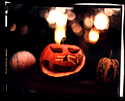DraganB
Member
hi friends,
i am building a new camera right now, practical tests showing image on groundglas up to the edge no problems, but i have read somewhere that the full iris must be visible from the groundglas corner to form the image, i dont understand because the iris is not visible full only partial, the image is there on the groundglas. when i look on the shema how the light travels trough the lens i see that only the oposite edge is needed to form the image.
so practicaly and from my understanding of physics not the complete iris must be visible, do i miss something? in large format books they say full iris??


i am building a new camera right now, practical tests showing image on groundglas up to the edge no problems, but i have read somewhere that the full iris must be visible from the groundglas corner to form the image, i dont understand because the iris is not visible full only partial, the image is there on the groundglas. when i look on the shema how the light travels trough the lens i see that only the oposite edge is needed to form the image.
so practicaly and from my understanding of physics not the complete iris must be visible, do i miss something? in large format books they say full iris??





 even the Xenar 75/3.5 covers an "image" to the corners of the marked 6x9 area. I plan to use this lens with a 6x8 back for street photography. You know only the key subject in the frame needs sharpness. Corner-to-corner perfection matters only in landscapes and document reproduction.
even the Xenar 75/3.5 covers an "image" to the corners of the marked 6x9 area. I plan to use this lens with a 6x8 back for street photography. You know only the key subject in the frame needs sharpness. Corner-to-corner perfection matters only in landscapes and document reproduction.